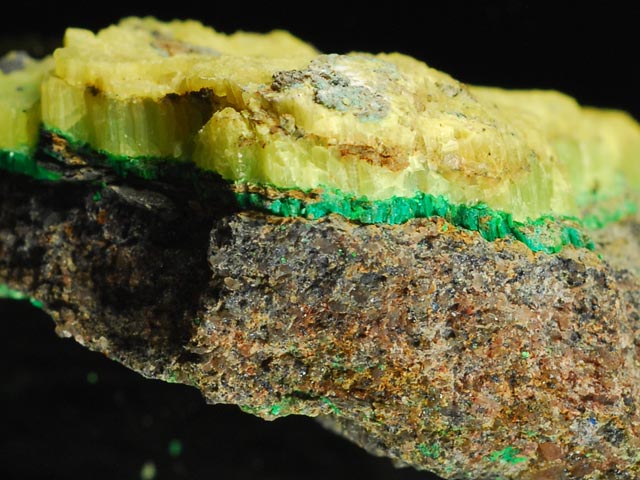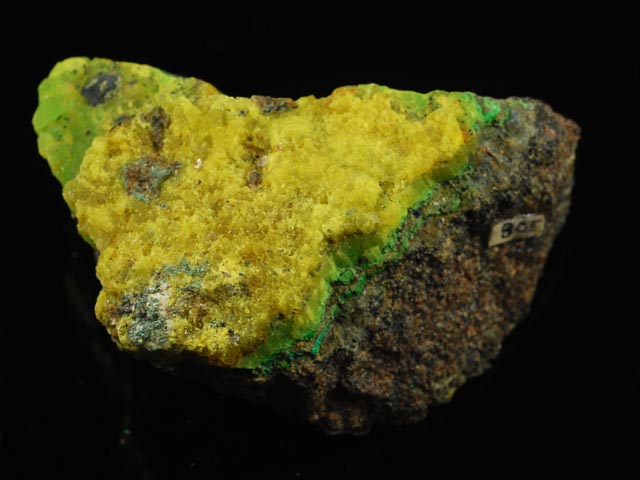Home > Uranium Minerals II – November 29 > MS0823 Liebigite, Voglite
Liebigite, Voglite - Sold
- White Canyon #1 mine
- Frey Point
- San Juan County
- Utah
- U.S.A.
- 4.8 by 2.6 by 1.8 cm –
Mining in White Canyon was an important part of the Cold War uranium boom (1950s-1960s). While overshadowed in production by the nearby Happy Jack mine, other claims in White Canyon produced colorful encrustations of exotic uranium minerals, here dominated by uranyl carbonate minerals. This specimen features a rich coverage of daylight fluorescent crystalline liebigite with minor emerald green voglite.
Liebigite is a hydrated uranium carbonate, named in honor of Justus von Liebig (1803–1873), former chemistry professor at the University of Munich (Smith, 1848). Mereiter (1982) solved the crystal structure of liebigite, Ca2UO2(CO3)3·11H2O, demonstrating a variable water content, and finding a layer structure consistent with the perfect cleavage of the mineral. Liebigite here forms a 3 mm crystalline crust on a >1 mm layer of voglite on a flat surface of sandstone. Vogl (1853) described a green uranium mineral from Jáchymov, Czech Republic. In an editorial comment immediately following the paper, Wilhelm Karl von Haidinger proposed the name voglite after the author, Josef Florian Vogl (1818–1896). This is a historical practice, no longer sanctioned by the International Mineralogical Association. Later study by Frondel (1958) (note: file size 24.6MB) established the currently accepted formula of Ca2Cu(UO2)(CO3)4·6H2O and Piret (1979) defined a unit cell with monoclinic symmetry. To this day, the crystal structure remains unsolved.
This specimen was part of the personal collection of Ralph Merrill, proprietor of the prolific mail order business Minerals Unlimited, obtained in 1956 from Otto Ray, a mineral collector from Salt Lake City. Merrill's collection card and label also ship with the specimen.


